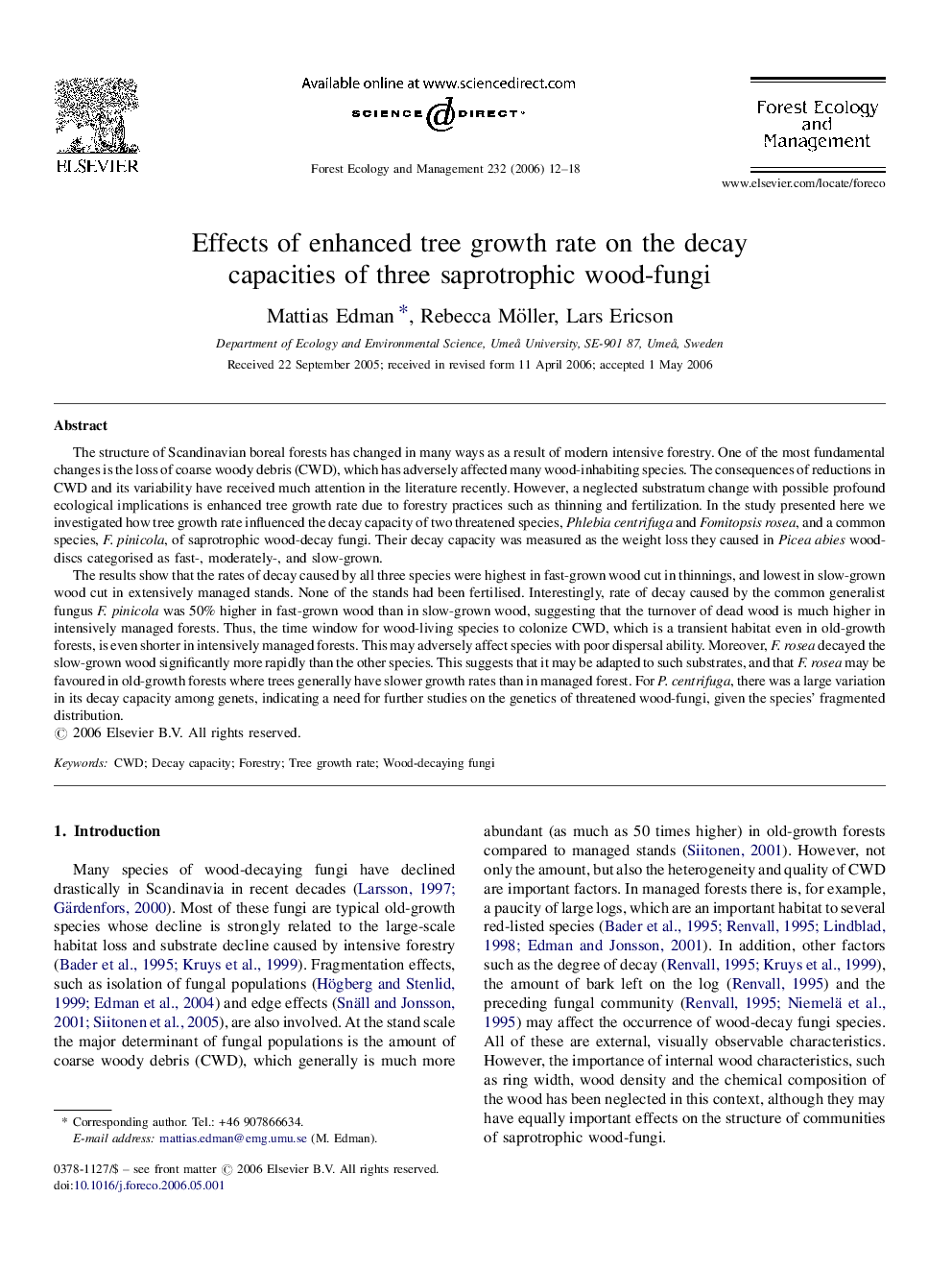| Article ID | Journal | Published Year | Pages | File Type |
|---|---|---|---|---|
| 90474 | Forest Ecology and Management | 2006 | 7 Pages |
The structure of Scandinavian boreal forests has changed in many ways as a result of modern intensive forestry. One of the most fundamental changes is the loss of coarse woody debris (CWD), which has adversely affected many wood-inhabiting species. The consequences of reductions in CWD and its variability have received much attention in the literature recently. However, a neglected substratum change with possible profound ecological implications is enhanced tree growth rate due to forestry practices such as thinning and fertilization. In the study presented here we investigated how tree growth rate influenced the decay capacity of two threatened species, Phlebia centrifuga and Fomitopsis rosea, and a common species, F. pinicola, of saprotrophic wood-decay fungi. Their decay capacity was measured as the weight loss they caused in Picea abies wood-discs categorised as fast-, moderately-, and slow-grown.The results show that the rates of decay caused by all three species were highest in fast-grown wood cut in thinnings, and lowest in slow-grown wood cut in extensively managed stands. None of the stands had been fertilised. Interestingly, rate of decay caused by the common generalist fungus F. pinicola was 50% higher in fast-grown wood than in slow-grown wood, suggesting that the turnover of dead wood is much higher in intensively managed forests. Thus, the time window for wood-living species to colonize CWD, which is a transient habitat even in old-growth forests, is even shorter in intensively managed forests. This may adversely affect species with poor dispersal ability. Moreover, F. rosea decayed the slow-grown wood significantly more rapidly than the other species. This suggests that it may be adapted to such substrates, and that F. rosea may be favoured in old-growth forests where trees generally have slower growth rates than in managed forest. For P. centrifuga, there was a large variation in its decay capacity among genets, indicating a need for further studies on the genetics of threatened wood-fungi, given the species’ fragmented distribution.
